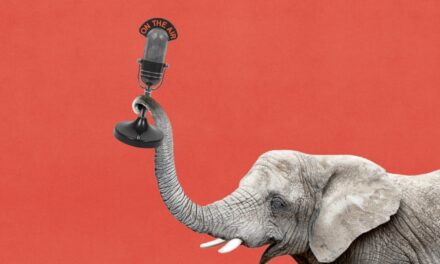
{ if(window.Osano?.cm?.getConsent().ANALYTICS === ‘ACCEPT’){ if (window.TRINITY_PLAYER && TRINITY_PLAYER.players[‘article-body-e2ffeab4-5037-11ef-8dfa-2bc1879d4886’]) { TRINITY_PLAYER.api.createPlayer(‘article-body-e2ffeab4-5037-11ef-8dfa-2bc1879d4886’); } else { let id = ‘2900013015’; if(__tnt?.ads?.dfp?.af || window.Osano?.cm?.getConsent().MARKETING != ‘ACCEPT’) id = ‘2900017379’; const text = encodeURIComponent(btoa(‘#article-body’)); var js = document.createElement(‘script’); js.setAttribute(‘data-player-id’, ‘article-body-e2ffeab4-5037-11ef-8dfa-2bc1879d4886’); js.src = `https://trinitymedia.ai/player/trinity/${id}/?pageURL=https://richmond.com/news/local/history/black-history-museum-virginia-national-park-service-grant-black-culture/article_e2ffeab4-5037-11ef-8dfa-2bc1879d4886.htmlpoweredBy&partner=Flex&textSelector=${text}&FAB=1`; document.body.appendChild(js); } } else { document.getElementById(‘lee-trinity-player’).style.display=’none’; } })(); ]]>
The U.S. National Park Service awarded the Black History Museum & Cultural Center of Virginia with a designation in the African American Civil Rights Network, a collection of places and programs that tell the stories of the Civil Rights Movement.
It is the second site in Virginia to be given the designation, after the Contrabands and Freedmen Cemetery and Memorial in Alexandria.
BHMVA, located at the Leigh Street Armory at 122 W. Leigh St. in Richmond, was founded in 1981 and has been headquartered in the historic building since 1991.
The museum gives an overview of different time periods in Black history, including the antebellum period, the Civil War, Reconstruction and the Jim Crow era. Additionally, the museum hosts exhibitions that feature more specific aspects of Black history and culture.
People are also reading…
“The African American Civil Rights Network designation highlights our ongoing commitment to preserving and sharing the vital stories of the men and women who fought for civil rights and justice. This designation from the National Park Service as well as the generous support from our donors are powerful affirmations of our mission and the value of our work,” said Shakia Gullette Warren, executive director of BHMVA.
Warren
Courtesy of BHMVA
In addition to the new designation, BHMVA received grants from Dominion Energy and the Community Foundation of Richmond, and a $200,000 anonymous foundation gift.
“This support not only strengthens our capacity to preserve and share African American history and culture, but also ensures that we can continue to grow and innovate. Our partnerships are essential in advocating for BHMVA and advancing our shared vision of a more inclusive and informed society,” said Dr. Monroe E. Harris Jr., the president of the board of BHMVA.
The new funding will be used to “transform” the original site of the museum, which is on Clay Street, into a research center.
Gullette Warren stressed the importance of preserving Black history for the future.
“These funds will enable us to continue strengthening our museum as a center for scholarly research, making our extensive collection accessible to the broader community and ensuring that these important stories continue to be preserved for future generations,” she said.
PHOTOS: Black History Museum and Cultural Center of Virginia in 2016
The Leigh Street Armory now serves as the Black History Museum and Cultural Center of Virginia. The structure once served as headquarters for the First Battalion Virginia Volunteers Infantry.
Mary Lauderdale, visitor services manager for the Black History Museum and Cultural Center of Virginia, stands before an image of the Rev. Martin Luther King Jr. “Having students here helped us to see the positive impact the space will have on the community,” she says.
A statue of Arthur Ashe (left) and a display of NASCAR driver Wendell Scott are among the artifacts at the Black History Museum and Cultural Center of Virginia.
Mary Lauderdale, Visitor Services Manager of the Black History Museum & Cultural Center of Virginia, talks about the Emancipation Tree, one of the exhibits at the new museum in Richmond, VA Monday, April 18, 2016.
Mary Lauderdale, Visitor Services Manager of the Black History Museum & Cultural Center of Virginia, walks past a poster promoting one of the upcoming exhibits at the new museum in Richmond, VA Monday, April 18, 2016.
An 1804 slave collar is one of the exhibits at the new Black History Museum & Cultural Center of VA, in Richmond, VA Monday, April 18, 2016.
Mary Lauderdale, Visitor Services Manager of the Black History Museum & Cultural Center of Virginia, talks about the Woolworth’s lunch counter display, one of the exhibits at the new museum in Richmond, VA Monday, April 18, 2016.
Books on Rosa Parks, Nat Turner and Maggie Walker were three of a number of volumns for sale at the new museum in Richmond, VA Monday, April 18, 2016. In the background is an exhibit commorating the Woolworth’s lunch counter occupation by local black students in the early 60’s. The Woolworth’s sign is original.
Africa-shaped key rings on display at the new Black History Museum & Cultural Center of VA, in Richmond, VA Monday, April 18, 2016.
Large letters outside the new Black History Museum & Cultural Center of VA, in Richmond, VA Monday, April 18, 2016.
A display on Wendell Scott, first black NASCAR driver is one of the exhibits at the new Black History Museum & Cultural Center of VA, in Richmond, VA Monday, April 18, 2016.
Mary Lauderdale, Visitor Services Manager of the Black History Museum & Cultural Center of Virginia, talks about the statue of Arthur Ashe, one of the exhibits at the new museum in Richmond, VA Monday, April 18, 2016.
An “Emancipation Tree” and a statue of Arthur Ashe are two of the exhibits at the new Black History Museum & Cultural Center of VA, in Richmond, VA Monday, April 18, 2016.
The former Leigh Street Armory which is now the home of the Black History Museum & Cultural Center of Virginia, in Richmond, VA Monday, April 18, 2016.
Abner Clay Park, which sits across Leigh Street from the armory/museum, has not received a substantial upgrade in 25 years, but the city’s Capital Improvement Plan for 2016-20 calls for a renovation.
ALEXA WELCH EDLUND/Times-dispatch
Two young black students entering the previously all-white Chandler Junior High School in September 1960. By 1961, only 37 of 23,000 black students were attending white schools.
Anderson Collection, Valentine Richmond History Center
These pictures from July 22, 1941 show the bad conditions at Elba Negro School, 1000 West Marshall Street. This photo shows one of the two wash basins for the approximately 650 pupils.
This 1959 photo shows Louis Cousins in the Maury High School Auditorium in Norfolk, Va. In 1959, Cousins was the only black student at Maury High School. When six public schools closed more than 50 years ago rather than accept black students, 10,000 white students in Norfolk were locked out of classrooms during Virginia’s last, desperate gasp to resist integration.
Oliver W. Hill Sr. (center), joined by his son Oliver W. Hill Jr. (left) and then-Gov. Mark R. Warner, appeared at a ceremony to mark the renaming of the Finance Building at Capitol Square in his honor. The elder Hill, who died in 2007, was a leader in the fight for civil rights.
2005, BOB BROWN/times-dispatch
Wilder
DANIEL SANGJIB MIN/times-dispatch L. Douglas Wilder made history when he became the first African-American to be elected governor. He later served as mayor of Richmond and continues to influence politics.
Mitchell
Maggie L. Walker was the first black woman to charter a bank — the St. Luke Penny Savings Bank in 1903 and
Mayor Henry L. Marsh III spoke in 1978 at a 100th birthday event for Bill “Bojangles” Robinson, whose statue is at left. The city could soon recognize Leigh Street from North Third Street to North Belvidere Street as Bill “Bojangles” Robinson Boulevard.
Richmond native Louis Draper was instrumental in founding the Kamoinge workshop, an influential group of black photographers in the United States.
Famed gospel singer and guitarist Sister Rosetta Tharpe lived in Richmond’s Barton Heights neighborhood for several decades.
Leslie Garland Bolling, Richmond artist. At right is the sculpture “Sewin’ Seed.” In 1935, Bolling became the first African-American artist in Virginia to have a one-man exhibition.
Valentine Richmond History Center
“Sewin’ Seed” one of Leslie Garland Bolling’s wood sculptures are in the exhibition at the Library of Virginia. Bolling was a self-taught sculptor and achieved national acclaim in the 1930s. In 1935 he became the first African-American artist in Virginia to have a one-man exhibition, according to info on the library Web site. Most of the pieces in the exhibition are from local collectors.
DEAN HOFFMEYER/times-dispatch
Leah Shepard (804) 649-6254



